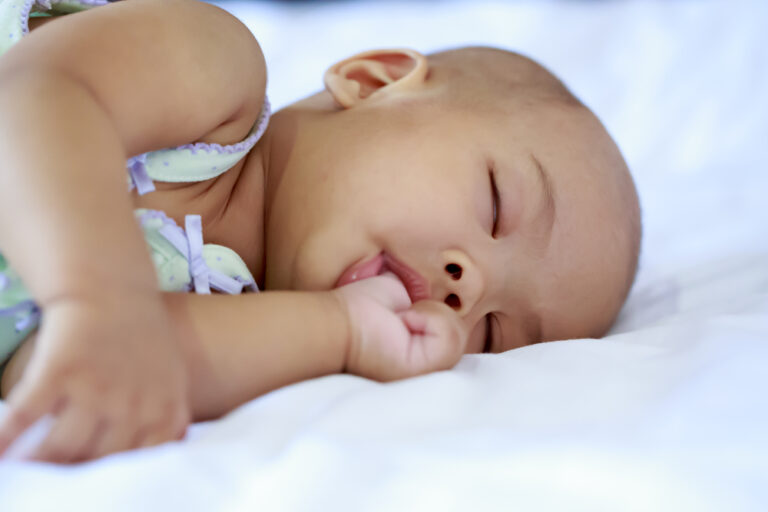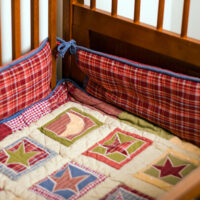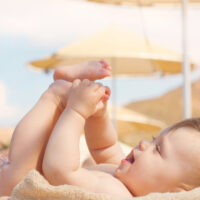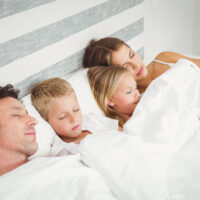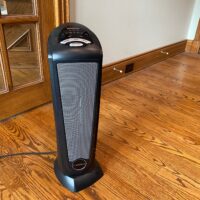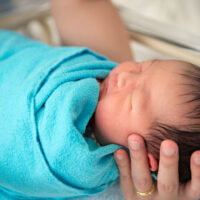While you might think of white noise as irritating, there’s someone in your household that finds it relaxing and reassuring. Whether it comes from the radio, a stuffed toy, or the sound of your voice, white noise is great for sending babies to sleep. Read on to find out where to get it, how to use it safely, and what to look out for.
What Exactly Is White Noise?
You might have already heard of white light. It’s what happens when every light frequency along the electromagnetic spectrum reflects at the same time. White noise is a similar mixture of different sound frequencies, all played together at the same time. They’re high, low and everything in between. These sound frequencies are continuously produced in the background. It sounds a bit like a “shhh” sound that never stops.
Used loosely, the term “white noise” sometimes refers to the everyday sounds of the surrounding environment that fade into the background.
There are plenty of appliances and environmental soundscapes that produce a sort of white noise. Examples are hairdryers, blenders, gushing wind and heavy rain. People also think of chirping crickets, the din of people talking or the washing machine on spin cycle.
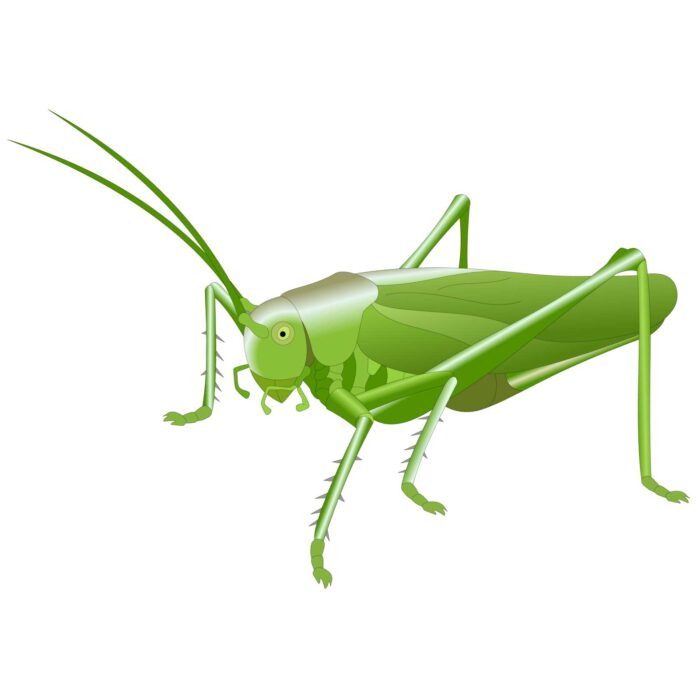
How Does It Work?
The use of white noise as a sleep aid is based on findings by Dr Harvey Karp (author of The Happiest Baby on the Block) and his “fourth trimester” theory.
Life in the womb was warm and cosy, and your baby was used to hearing a loud noise in there. Sounds such as your heartbeat, rushes of blood and fluids, the sound of your voice from the inside and your breathing were constant and reassuring to your baby even before she was born.
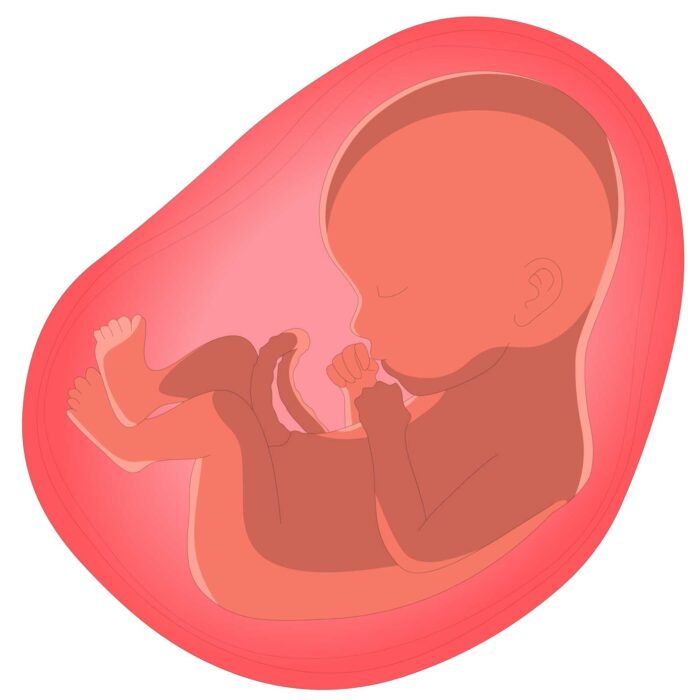
In comparison to life in the womb, life on the outside can seem quiet and even be unnerving. Since he’s in a brand new environment, your baby has an immature reflexive reaction. Anything that startles him will jolt him awake and make him jump.
White noise blocks out new sounds that your child might find scary: doors slamming, footsteps or unfamiliar voices. This is called “sound masking”. The constant presence of a noise makes your baby’s brain less aware of any other sounds. If your floorboards are creaky, or you’re expecting a late evening phone call, white noise can be invaluable.
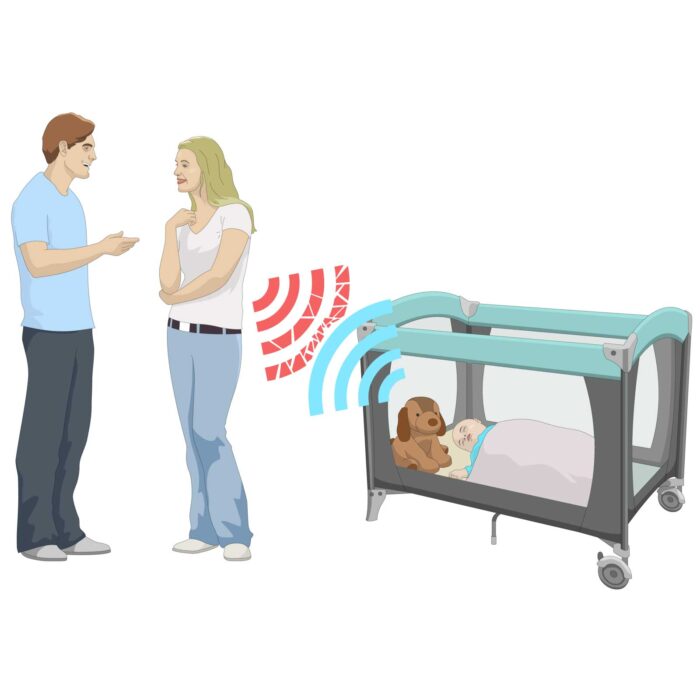
Dr Karp even claims that using white noise could add 1-3 hours sleep to a swaddled baby in the first three months of life.
My own research shows that the average baby, between 0-24 months will sleep for about 1.5 hours more if using white noise throughout the night.
Many mums and dads find that they end up sleeping better with white noise in the background too.
Sources of White Noise
Radio static is an excellent example of white noise. Household appliances such as blenders, vacuum cleaners, hairdryers, and humidifiers produce white noise too, but they are not appropriate for prolonged use at nap time.
A great source of white noise that can be left on all night is a fan. My research shows that the sound of a fan is one of the best noises. It works well both to help your baby fall asleep and to stay asleep.
The average baby going to sleep with the sound of a fan fell asleep nearly 8 minutes quicker and slept for 2 hours longer than a baby without any sort of white noise.
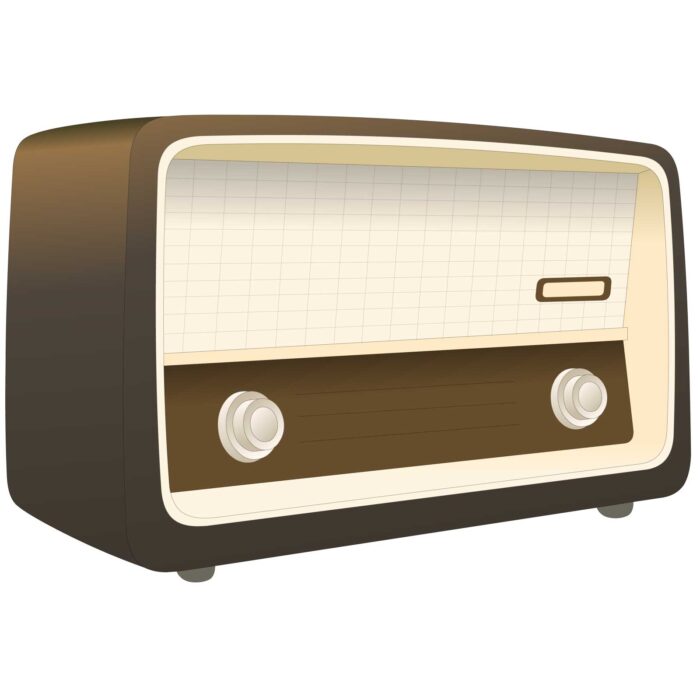
You can buy a CD of white noise, stream a Youtube video or download a white noise app onto your smartphone. Some popular app brands include Sleep Pillow, Noizio and Baby Snooze.
Plenty of manufacturers have brought white noise machines onto the market. The first machines had to be plugged into a power socket and played white noise only. Nowadays, there are portable varieties that you can pack and pull out quickly while traveling. There are also sound machines that combine traditional white noise effects with melodies and natural soundscapes, including rainforest sounds, crashing waves and whale music.
Some even simulate the sounds your baby would have experienced in the womb. Popular brands include Marpac, ASM, Sound Oasis and Baby Shusher.
Combination products are even more appealing to consumers looking for white noise solutions. White noise sound effects can be combined with a baby monitor, alarm clock, night light or mobile.
CloudB is a company that specializes in sleep solutions for families. They manufacture a broad range of popular plush toys with built-in white noise and sound effects. They’re small, portable and often become loveys. The Sleep Sheep and the Tranquil Turtle are two of the most popular combination of plush toys with white noise effects.
If you’re not keen to invest money in a white noise solution, I recommend that you set up a fan near the cot, turn on the ceiling fan if the weather permits, or just use your voice to shush.
Whatever you do, don’t use the TV or an active computer screen as a source of white noise. The flickering of artificial lights in the display will distract your baby or disrupt her sleep.
Can White Noise Machines Be Dangerous?
A study was carried out in 2003, and the results published in the journal Science. Findings indicated that excessive use of white noise could affect hearing and speech development in infants. The study was done on rat pups and not human babies. The rats were exposed to white noise constantly. As a result, their hearing development was delayed, but it did mature and reached normal levels once the exposure to white noise stopped.
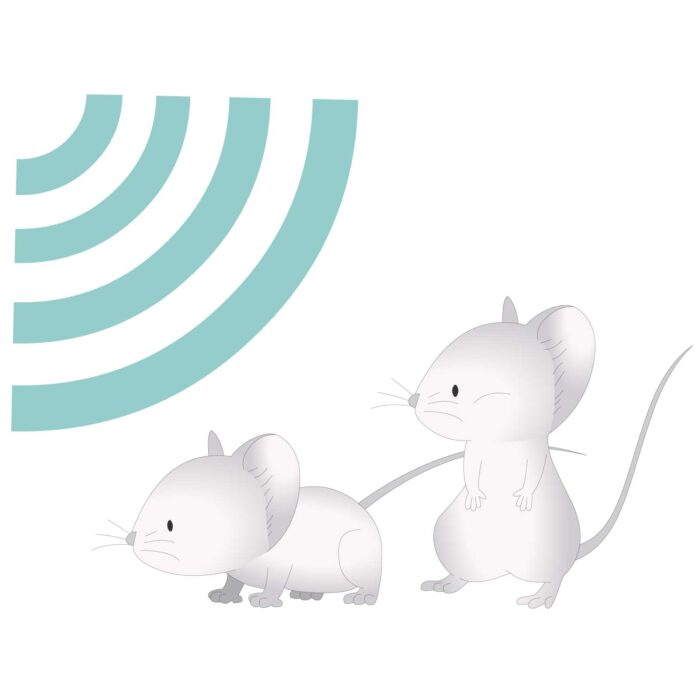
The study could not offer conclusive results about whether infants could be harmed by the continued use of white noise. The researchers advised against constant exposure to it but admitted that everyday exposure probably wouldn’t do any harm.
Then, in 2014 some researchers investigated white noise machines. An article entitled “Infant Sleep Machines and Hazardous Sound Pressure Levels”, published in 2014 in Paediatrics showed that white noise machines on the market can produce volumes of up to 85 dB and beyond.
We already know that constant exposure to an 85 dB noise would be harmful to adult hearing. If a white noise machine was placed too close to a baby’s ear at top volume and left on for a long time, this could harm a baby’s hearing.
Should I Adjust the Decibel Level According to my Baby’s Age?
Auditory development occurs quite rapidly in babies between the ages of zero and six months. During the first twelve months of your baby’s life, she has an auditory threshold of around 25 – 35 decibels. Adults with a normal hearing capacity have an auditory threshold of 0 decibels.
This means that white noise played at 50 decibels will sound softer to your newborn than it will to an adult.
Even in light of the new research into noise machines and their potential hazards, Dr Karp still advocates that sound between 60 – 75 dB will not do your baby any harm. However, if you want to be absolutely sure, don’t play white noise above 50 dB, regardless of her age.
This is the recommended noise limit for pediatric hospital rooms and nurseries. It’s also the decibel level of an average natural conversation. There are smartphone apps available that measure and report decibel levels. SPLnFFT and SoundMeter+ are popular and highly regarded as accurate.
Turn the unit’s volume down to 50 dB or lower if you’re worried about long-term exposure to white noise, or turn it off completely once your baby is asleep.
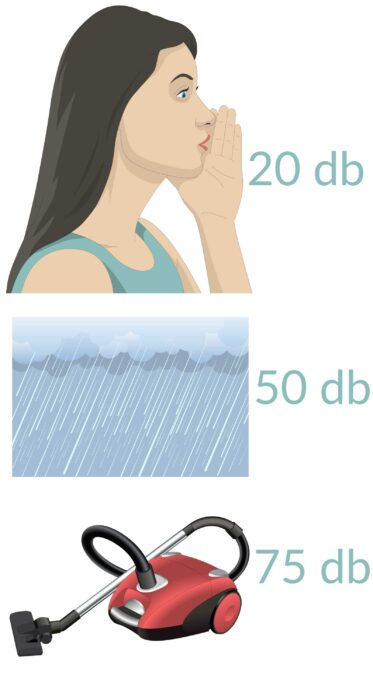
When and How to Quit
White noise is a type of sleep prop, much like a pacifier or a blankie. Older children and adults have sleep accessories too. Using a night light, turning the pillow over to sleep on the cold side or needing a glass of water beside the bed is common.
Plenty of families continue to use white noise or music as a sleeping aid for years, and some people end up using it for their entire lives. You have complete control over how long your baby is exposed to white noise. You can choose exactly when to phase it out.
An easy way to stop is to simply turn down the volume gradually after your child has fallen asleep until they no longer need it.
What Worked For You?
You should now have an understanding of what white noise is, where to find it, how to use it safely and when to quit using it. White noise has been a great help for my daughter. It is still an important part of her sleep routine.
Is silence golden in your household, or does your baby snooze for longer with white noise in his bedroom? We’d love to know what worked for your family and when (or if!) you phased out white noise. Leave a comment below.
